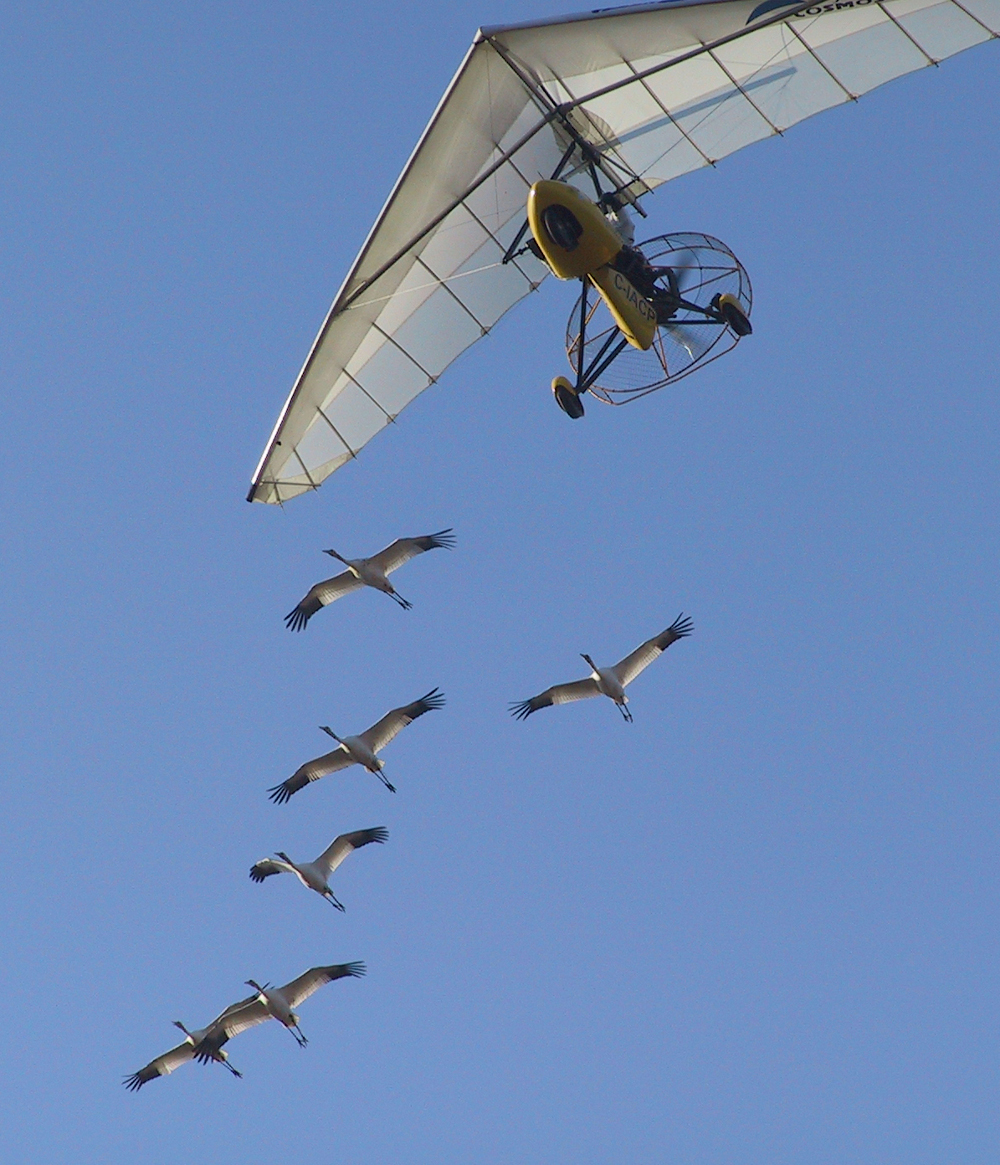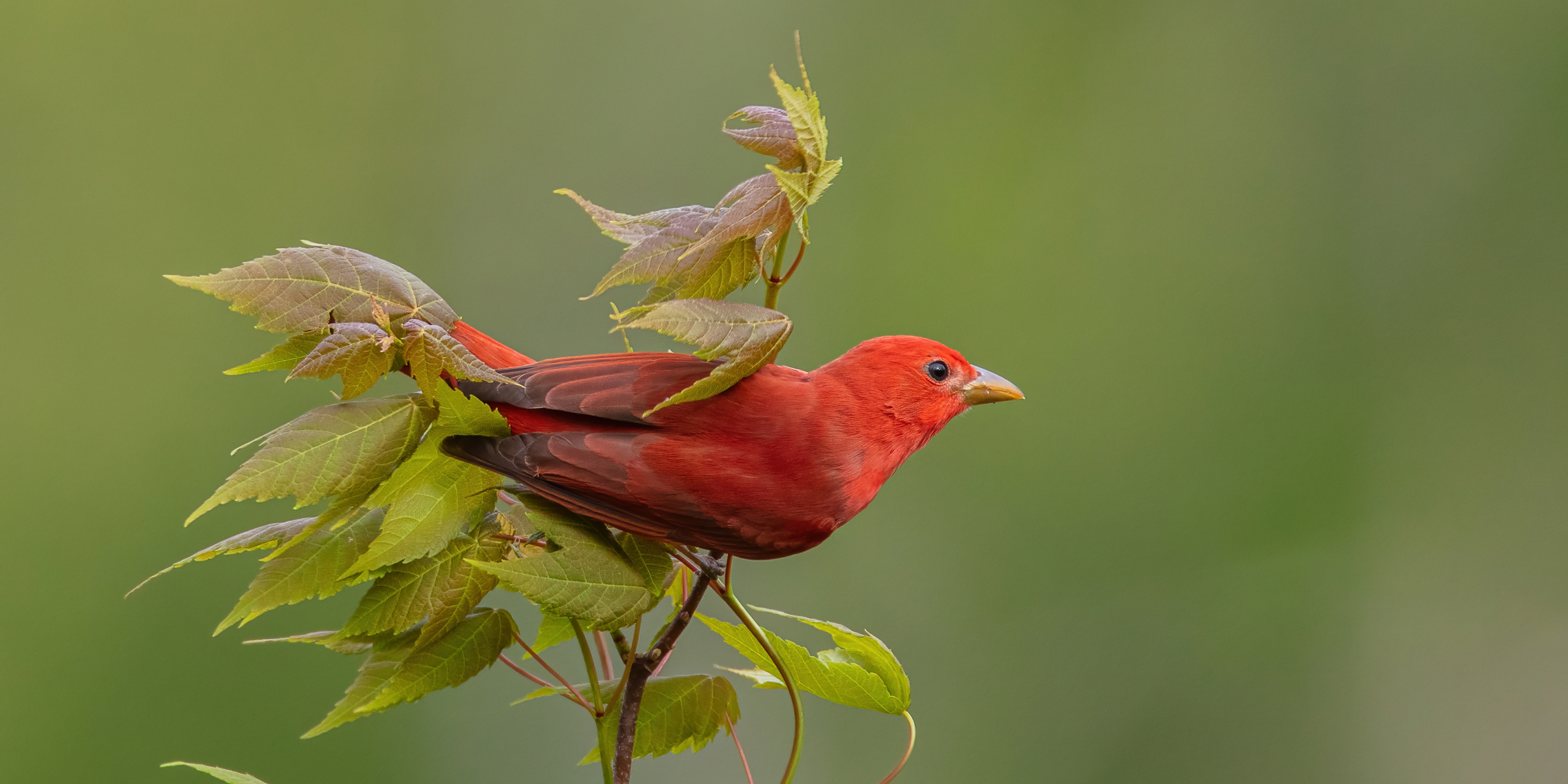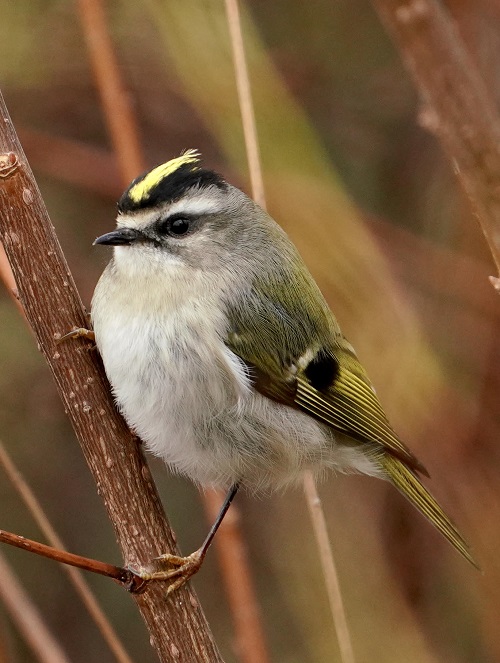Operation Migration, which took flight 25 years ago to teach birds a new migratory route and since 2001 has helped reintroduce Whooping Cranes to the Wisconsin, has withdrawn from the Whooping Crane Eastern Partnership (WCEP) and is dissolving the organization.
Bill Lishman and Joe Duff developed the aircraft-guided migration method into an effective means of reintroducing endangered cranes into an area they had not inhabited in over a century.
The first migration flight leading Whooping Cranes occurred in 2001 – shortly after the 9-11 attack--and proved to be an uplifting story; one of ordinary people working to save an endangered, North American species.
For 15 years, Operation Migration (OM) pilots and a dedicated ground crew led cranes on a journey south from Wisconsin to wintering grounds in Florida, raising and contributing more than $10 million and covering 17,457 miles with a total of 186 trusting Whooping Cranes trailing off the wingtips of its ultralights.
Each of the cranes that survived returned north the following spring, and continued to migrate annually thereafter.

Photo by Operation Migration. Over the span of 15 years, Operation Migration pilots led 186 Whooping Cranes south from Wisconsin to wintering grounds in Florida.
The aircraft-guided migration method ended in 2015 when a new U.S. Fish and Wildlife Service strategic plan decided determined that this method was “too artificial” and suggested that cranes raised by costumed handlers resulted in inattentive parents that did not adequately protect their offspring.
OM says it continued work for three more years in the belief that the goal of a self-sustaining Eastern Migratory Population of Whooping Cranes was attainable. OM now says it no longer believes this goal is achievable.
“As a result, we cannot continue, in good faith, to accept contributions or justify assigning our staff and volunteers to carry out the work outlined in the strategic plan imposed on WCEP.... This decision is heartbreaking for us all but we have exhausted all possible avenues to avoid this outcome.”
OM was alluding in part to the FWS decision to devote more resources to also establishing a non-migrating Whooper population in southwestern Louisiana. Since 2011, some 10-16 juveniles have been released there annually with the goal of achieving a self-sustaining population of 25 breeding pairs. The Louisiana population numbers more than 50 with five mating pairs making a total of nine nesting attempts in the winter of 2016 -- including the first wild-hatched Whooping Crane in Louisiana since 1939. Five chicks were reported hatched this year.
WCEP said it was “deeply saddened” at OM’s decision, saying: “Operation Migration has been a valued partner, contributing countless hours, resources and talent to our shared goal of returning a migratory population of Whooping Cranes to the eastern United States…. We still believe that a healthy and self -sustaining Eastern Migratory Population of Whooping Cranes is achievable.”
Davin Lopez, the Wisconsin DNR conservation biologist assigned to the project, said: “I do not believe we have been abandoned nor are we doomed to failure. We do have to share resources (chicks) with Louisiana, and that has changed things for us in terms of potential rapidity of progress, but has not doomed the EMP. I doubt now that any rearing method is a panacea… but the EMP continues to make strides towards being self-sufficient, albeit slowly.”
The current estimated population size of the eastern Whooping Crane population is 101 (not including wild-hatched chicks), with at least 74 of them in Wisconsin. As of Aug. 1, at least 10 chicks had hatched this year in Wisconsin, with 6 still alive, one of which has fledged.
--This is one of several timely articles in this month's Badger Birder newsletter; don't miss out on the latest birding and conservation news. Become a WSO member today! https://wsobirds.org/support/become-a-member--

